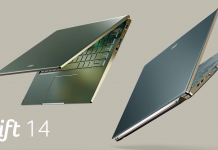Last updated on December 8th, 2022 at 02:21 pm
Intel is losing ground in the desktop PC market, but growing in laptops
At the quarterly reporting conference, Intel management did not hide that they associate the fall in demand for desktop components with the increased popularity of laptops. The latter remains the most popular tool of labor among those who are forced to be in self-isolation. Intel’s revenue in this area is 2.5 times higher than from the sale of desktop components.
Don’t forget to leave us a comment below and let us know what you think!
Share Our Website for Technology News , Health News , Latest Smartphones , Mobiles , Games , LifeStyle , USA News & Much more...





